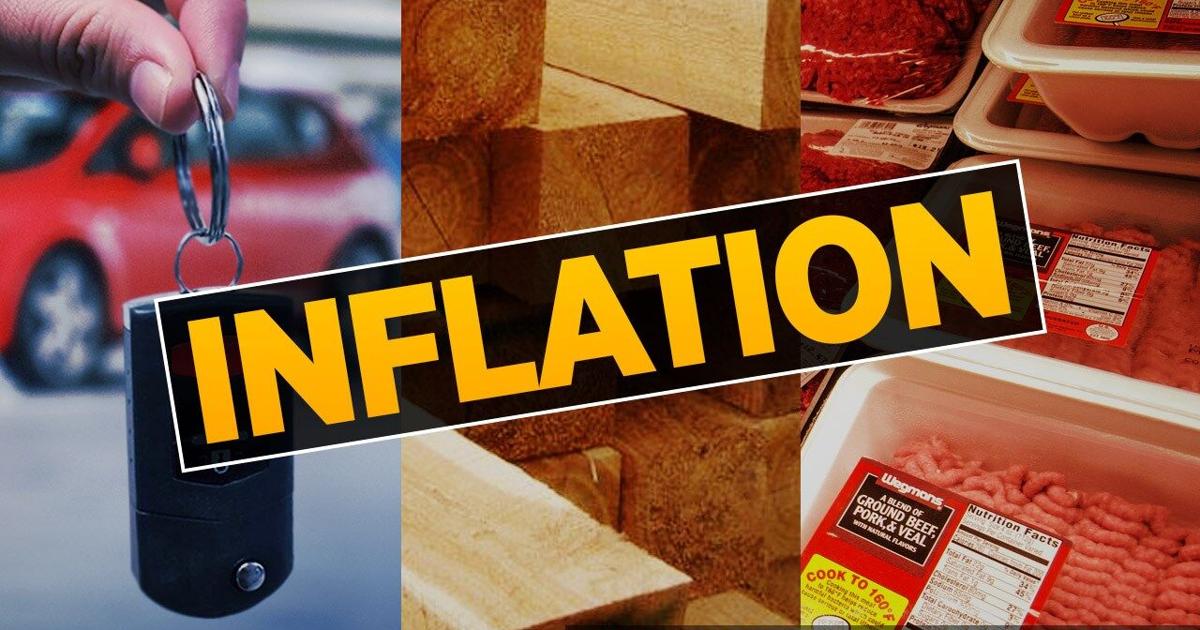
A key inflation reading showed a glimmer of hope on Tuesday, revealing a slight slowdown in rising prices — though they remain uncomfortably high.
The Producer Price Index, which measures wholesale prices before goods and services reach consumers, rose 10.8% in May compared to where it stood a year ago, according to data released Tuesday by the Bureau of Labor Statistics.
While that’s down from the revised 10.9% rise reported in April’s reading, it is still high by historical standards. The PPI had not recorded a double-digit increase in data going back to 2009 until this past December.
“The unrelenting rise in producers’ costs signals that consumers will find little respite from inflation in the coming months as those costs are passed on,” said Kurt Rankin, senior economist for PNC.
While the PPI measures wholesale prices, not retail prices paid by consumers, they have an eventual effect both on consumers and the overall economy.
“These wholesale price pressures still need to work their way through the supply chain and will either be passed on to the rest of us or eaten by company profit margins — or a likely combination of both,” said Peter Boockvar, chief investment officer for Bleakley Advisory Group.
When stripping out volatile food and energy, the so-called core PPI posted an 8.3% gain over the course of the last 12 months, compared to the revised 8.6% rise in that reading for April.
Much of the increase was due to soaring energy prices. Wholesale energy prices were up 5% in May compared to April, and up 44.6% over the course of the past 12 months.
A one-month increase of 8.4% in wholesale gasoline prices in May resulted in a 66.2% rise in gasoline over the year. The national average for a gallon of gasoline at the retail level hit $5 for the first time ever over the weekend, according to figures from AAA.
The good news for consumers is that wholesale food prices showed no month-over-month increase, despite rising retail prices for those goods. Wholesale food prices are still up 13.3% over the past 12 months, and the retail prices for food purchased to eat at home posted a one-month 1.4% rise in May and an 11.9% increase over the past 12 months, according to an earlier Labor Department reading.
Another sign of improvement was a month-to-month rise of just 0.4% in wholesale prices for cars and trucks, after a 1% rise on that basis in April. But automakers, whose production had been limited by a computer chip shortage, are finally getting production back to pre-pandemic levels, said Ian Shepherdson, chief economist for Pantheon Macroeconomics.
” On a month-over-month basis, we see encouraging signs at the margin,” said Shepherdson.
Tuesday’s PPI report comes after the latest Consumer Price Index report, which showed the fastest pace of price hikes for consumers in more than 40 years. Together, these reports likely put further pressure on the Federal Reserve to raise interest rates more aggressively in order to battle inflationary pressures.
The central bank hiked its benchmark interest rate by half a percentage point in May for the first time since 2000. It begins a two-day monetary policymaking meeting Tuesday and could announce a three-quarter-percentage-point hike at the conclusion of its meeting on Wednesday. That would be the biggest jump in that key interest rate since 1994.
But some economists question whether the Fed can really do much to curb inflation, given the rise in energy prices caused by the war in Ukraine and the sanctions on Russia’s oil exports, as well as continued supply chain issues.
“The Fed’s blunt toolkit won’t do much to alleviate supply-side disruptions,” said a note from Oxford Economics. “As such, risks to producer price inflation remains tilted to the upside in the near term, and any sustained moderation will only come gradually over the second half of 2022.”


